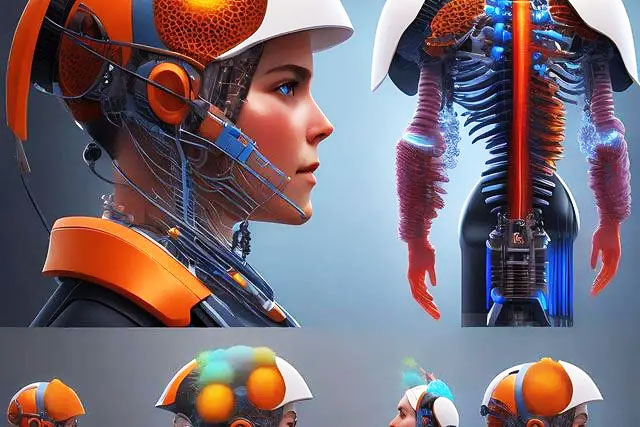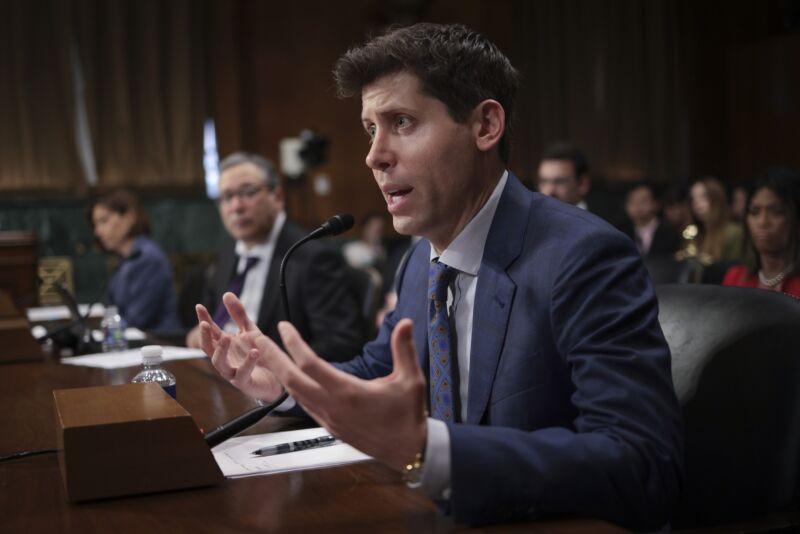GPT in Healthcare: Applications, Value and Outlook
With the continuous development of technology, the application of artificial intelligence (AI) in various industries is becoming more and more widespread, especially in the field of health care, where its potential is endless. Among them, GPT (Generative Pretraining Transformer), as the latest large-scale language model of OpenAI, is gradually exerting its unique influence in the healthcare industry. Here, we provide a detailed overview of the application of GPT in the healthcare industry in 2023, and Yioji will soon release a related report.

I. Development Background
Over the past few years, AI and machine learning research has made significant progress, and these technologies have shown their value in many healthcare applications, such as in disease diagnosis, patient care, and drug development. However, there is still much potential for AI applications in healthcare. In such a context, the development and application of GPT models will provide more possibilities in healthcare.
GPT is a natural language processing (NLP) AI model capable of understanding and generating human language. It learns the syntactic and semantic rules of a language, as well as some basic world knowledge, by pre-training on a large-scale text dataset. This allows GPT to excel in a variety of language tasks, such as question and answer, text generation, sentiment analysis, etc.
II. Application Scenarios
1. Electronic health record (EHR) interpretation and generation: EHR is the foundation of medical work, which contains all medical information of patients, such as medical history, diagnosis, and treatment plan. However, EHR usually contains a large amount of text data, which requires a lot of time and effort for doctors to read and understand. GPT can understand and generate human language, enabling it to interpret and generate medical records, which greatly improves the efficiency of medical staff.
2. Pre-diagnosis and condition analysis: In the primary care segment, GPT-based models can analyze the patient's symptom descriptions and give possible diagnoses to assist doctors in making more accurate judgments. This is of great value for telemedicine services in special situations such as epidemics, or for providing medical services in areas where medical resources are tight.
3. Patient care and health education: GPT can be used as an automated communication tool to provide customized health and treatment information to patients. For example, it can generate personalized health education materials based on a patient's condition and treatment plan to help patients better understand and manage their condition. In addition, GPT can also be used for daily patient care, such as reminding patients to take medication and have regular checkups.
4、Medical image interpretation: Medical images are an important tool in modern medical treatment, which can help doctors understand patients' conditions intuitively. However, medical image interpretation requires professional knowledge and rich experience, and the interpretation work is usually time-consuming. GPT can assist doctors in interpreting medical images, such as X-ray, CT, MRI, etc., so as to improve the accuracy and efficiency of diagnosis. In addition, it can generate descriptions about the image results, further reducing the workload of doctors.
5、Health management: Health management is an important tool for disease prevention, which includes diet management, exercise management, sleep management, etc. GPT can provide users with personalized health management suggestions to help them improve their living habits and prevent the occurrence of diseases. In addition, GPT can also make health assessment and disease prediction based on users' health data, such as heart rate, blood pressure, blood sugar, etc.
6、 Electronic medical record: Electronic medical record is an important part of medical work, which records all medical information of patients and is an important basis for doctors to make decisions. However, electronic medical records usually contain a large amount of text data, which requires a lot of time and effort for doctors to read and understand. GPT can understand and generate electronic medical records, and automatically extract important information from medical records and provide them to doctors for decision making. It can also help generate documents such as patient discharge summaries, reducing the workload of physicians.
III. Value Analysis
1. Improve diagnostic accuracy and efficiency: By automatically interpreting medical images and electronic medical records, GPT can help doctors make faster and more accurate diagnoses. Studies have shown that AI-based diagnoses have reached or surpassed those of human doctors for certain diseases.
2. Improve patient experience: GPT can improve patient satisfaction and compliance by providing personalized health education and patient care. In addition, GPT can reduce the workload of physicians so that they have more time and energy to communicate with patients, further improving the patient experience.
3. Reduce healthcare costs: By automating the processing of large amounts of text data, GPT can significantly reduce the workload of medical staff, thereby reducing healthcare costs. In addition, GPT's pre-diagnosis and health management functions can also help prevent and detect diseases at an early stage, reducing the cost of post-treatment.
4、Driving medical innovation: The openness and scalability of GPT make it a powerful tool to drive medical innovation. For example, GPT can be used for drug development to help scientists discover new drug targets and treatment strategies by analyzing a large amount of biomedical literature.
IV. Future Trends
1. Personalized medical services: Further development of GPT will lead to personalized and customized medical services, so that each patient can receive exclusive services for their unique situation.
2. Interdisciplinary collaboration: With the integration of AI with other fields, such as genetics and drug development, we foresee that in the future, GPT will be better able to play a role in interdisciplinary fields and drive innovation in the health and medical field.
3. Global medical services: The widespread application of GPT will enable the global expansion of medical services, so that patients can enjoy quality medical services no matter where they are located.
V. Development pain points
However, the application of GPT in the healthcare industry also faces some challenges. First, the privacy and security of medical data is a major concern. In addition, although GPT has made significant progress in understanding and generating human language, it still cannot fully understand complex medical knowledge and clinical situations, which may affect its application in the healthcare field. In addition, medical decisions usually involve life-saving health issues, so it is an important challenge to ensure the accuracy and safety of medical advice provided by GPT. Finally, how to effectively integrate GPT into existing medical systems so that it can collaborate effectively with doctors, nurses and other medical personnel is also an issue that needs to be addressed.
VI. Market Size Forecast
As the application of GPT in the health care field continues to grow and expand, its market size is expected to show a continuous growth trend. According to industry analysis and forecasts, the global market size of GPT in the health and medical industry will reach billions of dollars by 2026.
The following are the market size forecasts for each application area:
1、Electronic health record (EHR) interpretation and generation: The market size of this field is expected to reach about USD 1 billion by 2026.
2. Pre-diagnosis and condition analysis: The market size of this field is expected to reach about USD 1.5 billion by 2026.
3. Patient care and health education: The market size of this segment is expected to reach around USD 800 million by 2026.
4、Medical image interpretation: The market size of this field is expected to reach about USD 2 billion by 2026.
5、Health management: The market size of this field is expected to reach about USD 1.2 billion by 2026.
6, electronic medical records: the market size of this segment is expected to reach about $ 1 billion by 2026.
It is worth noting that these forecasts may be affected by a variety of factors, such as technological innovation, policies and regulations, market competition, etc.. Therefore, when making investments and decisions, a combination of factors needs to be considered and judged carefully.
With the growing application of AI in healthcare, the market demand for GPT-related technologies will continue to rise in the coming years. A variety of innovative companies and startups are expected to flock to this market, and the level of competition will continue to escalate. However, as long as the capabilities of GPT can be fully utilized and combined with other innovative technologies to bring real value to the healthcare sector, it is believed that there is still huge room for growth in this market.
VII. Conclusion
Overall, the application of GPT in the healthcare industry has made significant progress and has shown great potential. However, there are also some challenges that we need to address. In the future, we expect to see more research and applications to fully utilize the capabilities of GPT to improve the efficiency and quality of healthcare delivery and improve patient health.
Although the current GPT model has demonstrated strong capabilities in healthcare, we believe that this is just the beginning. As the technology continues to evolve and innovate, we expect to see more possibilities and opportunities. Let's look forward together to the future development of GPT in the healthcare industry and the changes it will bring to our health.
Related Article
-

The first "laborers" whose jobs were taken by AI have already appeared
-

With the integration of ChatGPT, this in-car AI voice assistant has "captured" many European countri
-

"Father of ChatGPT" and other industry leaders jointly warn: AI may bring the risk of human extincti
-

Father of ChatGPT Warns AI Could Exterminate Humanity
-

A senior U.S. attorney using ChatGPT to assist with a case turned out to be a fake?
-

Smart home industry will usher in a new opportunity for development under the AI wave

